
- Home
- Photography Tours
- Diary / Blog
- Galleries
- Foreign Trips
- Tasmania 2016
- NE Queensland 2016
- Western Alps 2016
- NE Spain 2016
- Australia's Wet Tropics 2015
- Australia's Top End 2015
- SW Australia 2015
- Switzerland 2015
- Andalucia 2015
- Belize 2015
- Australia 2014
- Switzerland 2014
- Belize 2014
- Bahama Islands 2014
- Switzerland 2013
- Ecuador 2012-2013
- Florida 2011-2012
- Vancouver Island 2011
- Australia 2010
- Peru 2008
- Bulgaria 2007
- Lesvos 2006
- California 2006
- New Zealand 2005
- Extremadura 2005
- Goa, India 2004
- The Gambia 2003
- About
Belize & Tikal
February-April 2014
Part 8 : Crooked Tree Wildlife Sanctuary

Jabiru (Jabiru mycteria)
Near the end of my stay at Crooked Tree, I finally got the chance to photograph a Jabiru in a nearby flooded field. I have been told that in normal years these enormous birds are present in quite large numbers along the shoreline of the lagoon, but due to this year's floods there is no exposed shoreline and consequently no Jabirus, Wood Storks or Roseate Spoonbills were present on the lagoon.
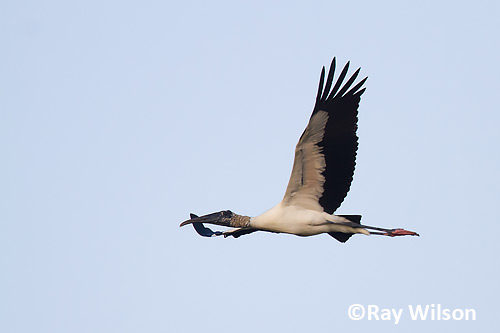
Wood Stork (Mycteria americana)
As mentioned above, Wood Storks were in short supply this year at Crooked Tree and the only ones I saw were a party of three flying overhead on the final morning of my stay.

male Vermillion Flycatcher (Pyrocephalus rubinus) feeding its chicks
Breeding season for the Vermillion Flycatchers was in full swing with the parent birds busily collecting flies to feed their chicks.
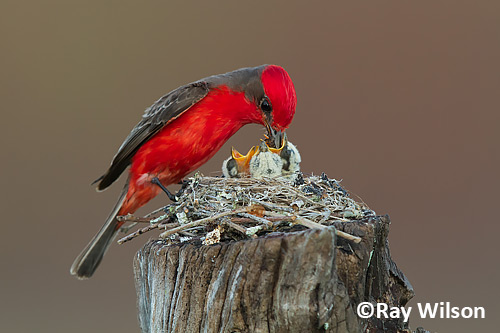
male Vermillion Flycatcher (Pyrocephalus rubinus) feeding its chicks
They don't make any attempt to hide their nest, making it on the tops of exposed fence posts. It's amazing they manage to rear any chicks to adulthood as the predation rate must be fairly high when the chicks are so completely exposed to the eyes of predators!
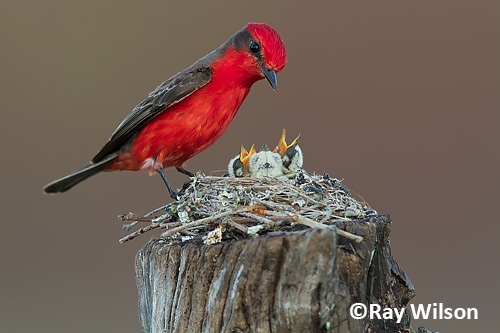
male Vermillion Flycatcher (Pyrocephalus rubinus)
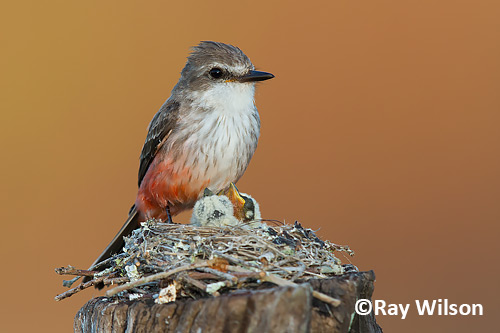
female Vermillion Flycatcher (Pyrocephalus rubinus) on its nest
As the temperatures rose, the female took up incubating duty to protect the chicks from the blazing heat of the sun.

female Vermillion Flycatcher (Pyrocephalus rubinus) sheltering its chicks from the sun
The Vermillion Flycatchers weren't the only ones engaged in rearing chicks and early one morning a pair of Northern Jacanas shepherded their newly-hatched chicks across the open water of the pond.
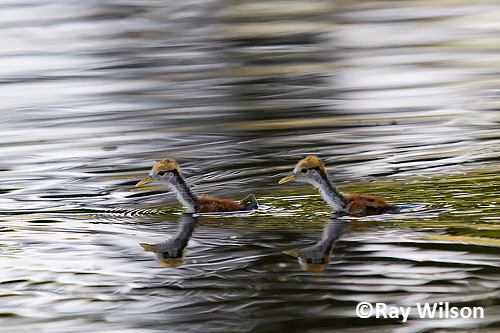
Northern Jacana (Jacana spinosa) chicks swimming across the pond
The Great-tailed Grackles were not quite so advanced in their breeding cycle and were still at the stage of collecting plant material for their nests.
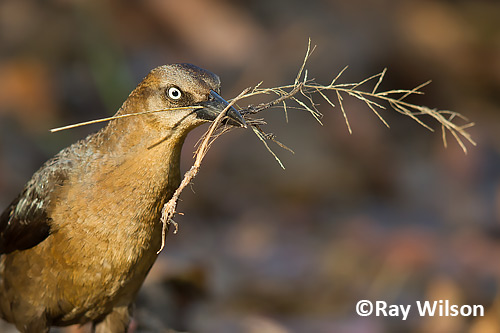
female Great-tailed Grackle (Quiscalus mexicanus) collecting nesting material
I spent several afternoons exploring the far side of the lagoon in a kayak. Although I love the freedom of paddling around around the water on my own, it does have the downside that I am limited to only being able to take the 400mm with me, meaning I have to get much, much closer to the birds than if I was using the 600. Fortunately that is not difficult with the abundant Snail Kites and I had numerous opportunities to get frame-filling shots of these beautiful and fascinating raptors.
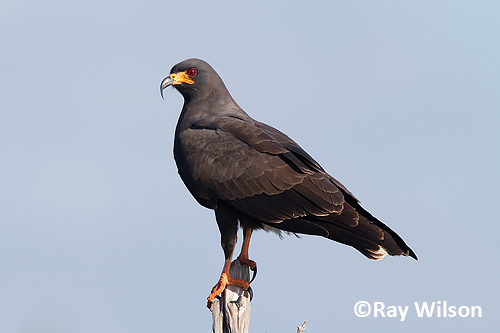
male Snail Kite (Rostrhamus sociabilis)
The long, sharply hooked bill of the Snail Kite is superbly adapted, and perfectly shaped, for the purpose of eating Apple Snails, of which their diet is almost exclusively made up of.
The abundance of their prey, and the reason for the high density of Snail Kites around the lagoon, is obvious from the number of egg cases on the emergent vegetation (see photo below). The Apple Snail lays its eggs under the cover of darkness and then drops back into the water. Unfortunately for it, the space in its body cavity that had been filled by the eggs is now filled with air and the snail is unable to escape into the relative safety of the underwater world and is left floating on the surface until it is able to expel the air from its body. During the couple of days this takes to achieve, the snails are easy pickings for the Kites.
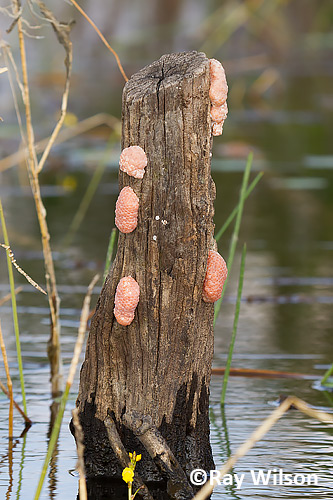
Apple Snail (Ampullariidae) eggs - the pink colour denotes that the eggs are still to hatch. Hatched casings are white.
Ospreys, although common, were a lot more timid and I found it impossible to get close enough to the perched birds to photograph them. Occasionally though one would fly-by close enough for a decent flght shot.
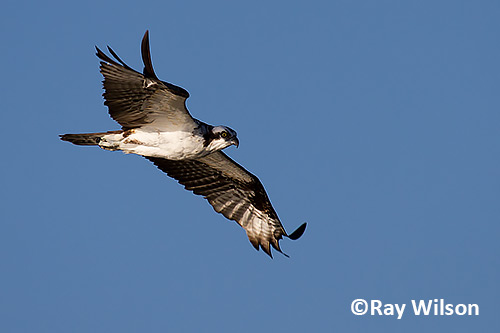
Osprey (Pandion haliaetus)
My main target on my kayaking forays, however, were the numerous Fork-tailed Flycatchers. These spectacular birds were also unfortunately a bit timid, and it took a lot of patience and perseverence to get sufficiently close to take a decent photo.
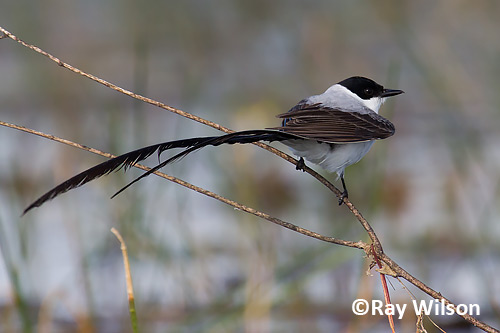
Fork-tailed Flycatcher (Tyrannus savana)

Water Snowflake (Nymphoides indica)
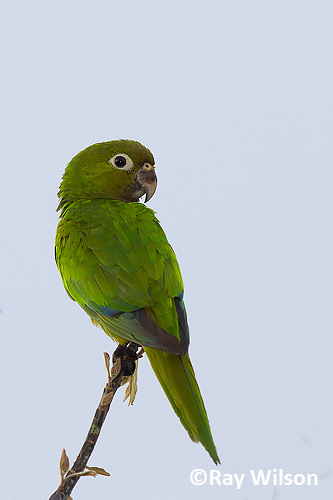
Olive-throated Parakeet (Aratinga nana)
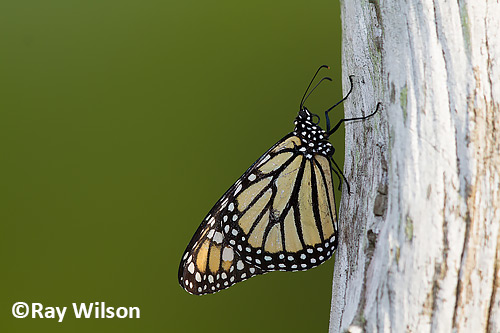
Monarch (Danaus plexippus)
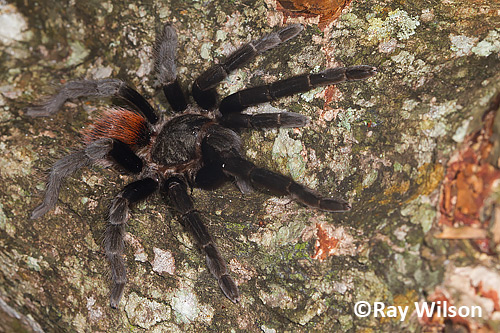
Mexican Redrump Tarantula (Brachypelma vagans)
While clearing up a building site at the lodge, a couple of tarantulas were found and translocated to a nearby tree for me. The above photo was taken shortly after it had been moved but as it got over the stress of being handled it wandered to the underside of the branch and settled down to rest in a shady crevice. (below).
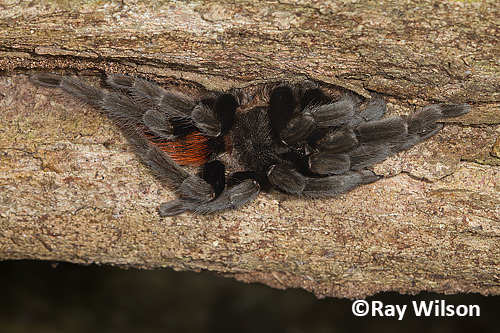
Mexican Redrump Tarantula (Brachypelma vagans)
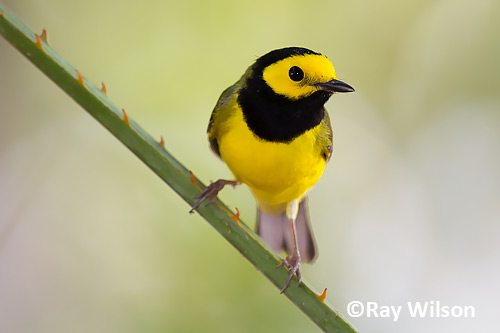
Hooded Warbler (Wilsonia citrina)
On my final morning, a small flock of birds, including the Hooded Warbler and Ivory-billed Woodcreeper shown here passed through some palm trees on the shoreline.
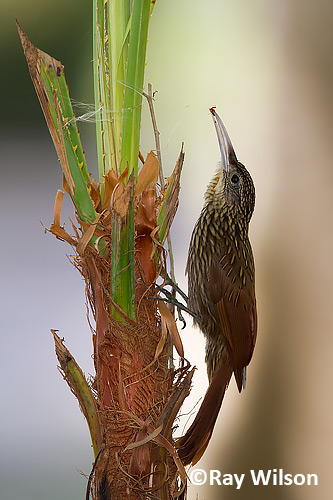
Ivory-billed Woodcreeper (Xiphocolaptes flavigaster)
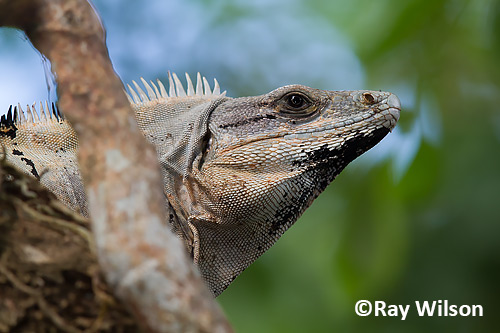
male Black Iguana (Ctenosaura similis)
Ray Wilson owns the copyright of all images on this site.
They may not be used or copied in any form without prior written permission.
raywilsonphotography@googlemail.com